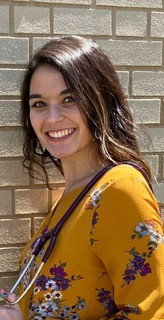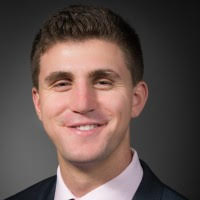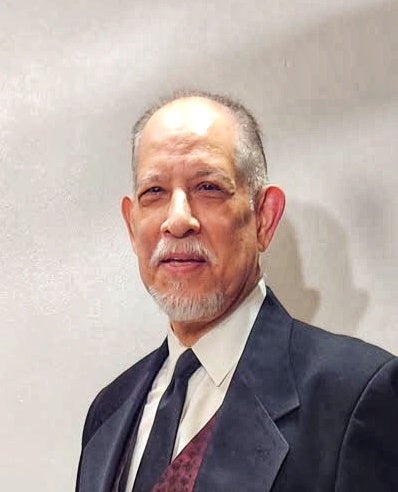Big 5 report on supply expense metrics
A Big 5 report keeps perioperative leaders at the University of Kansas Hospital in Kansas City abreast of leading financial metrics for the 31-OR department (illustration, p 9). The report displays financial variances for the 5 surgical supply-focused expense areas:

When: Tuesday, December 2, 2025 · 12:00 p.m. Eastern Time
About:
This webinar will dive into the importance of utilizing antifog surgical masks in clinical settings, examining how the risk of mask fogging can compromise the safety of healthcare providers and patients. Attendees will gain a comprehensive understanding of surgical masks, what antifog is, and what types of antifog technology are currently available in the market. The Cardinal Health hydrogel surgical mask will also be introduced, and its many features and benefits will be detailed.
- Understand the importance of antifog technology in surgical settings
- Compare and contrast the different types of surgical mask anti-fog technologies
- Explain the composition and functionality of hydrogel technology when utilized in surgical masks and understand its role as an antifog mechanism
Meet the Speakers:
Annie Copeland, Global Marketing Director, PPE, Cardinal Health
Annie resides in Massachusetts and has been with Cardinal Health for 8 years. With a degree in English and Marketing from Assumption University, she has held various roles across sales and marketing serving various customer segments. In her current role at Cardinal Health she leads both portfolio strategy and commercial execution for PPE. With a keen focus on clinical insight and customer needs, she aims to deliver a portfolio of PPE products known for reliable performance, designed for comfort and delivering ongoing value.
Bridget Stovall, Global Medical Advisor, Cardinal Health
Bridget currently resides in Green Bay, Wisconsin, and has worked for Cardinal Health for about a year. With a BSN from St. Ambrose University, she has a strong work history as a bedside nurse, a Clinical Nurse Leader, an Inpatient Nurse Manager, and now as a Global Medical Advisor. In her current role, she provides clinical expertise and serves as the subject matter expert to support product design, change management, and risk mitigation through product lifestyle. She serves as a clinical consultant and works to align clinical practice, product usage, and user needs.

When: Wednesday, December 3, 2025 · 1:00 PM ET
About:
This continuing education session explores the critical role of double gloving in enhancing safety for both surgical patients and healthcare workers. Participants will gain evidence-based insights into the risks associated with undetected glove perforations and the link between glove integrity and surgical site infections (SSIs). The program reviews recently published literature and consensus recommendations to highlight the benefits of double gloving with an indicator system and changing gloves at specific intervals including improved detection of glove breaches, decreased transmission of bloodborne pathogens, and reduced infection rates.
- Discuss key evidence supporting double-gloving as a critical sharps safety and infection prevention measure.
- Describe how indicator systems work and how science can impact effectiveness.
- Identify ways to overcome barriers to adoption and foster a culture of safety to follow surgical gloving best practices and AORN guidelines.
Meet the Speaker:
Carlo Butacan, BSN, RN, CNOR, Clinical Specialist, Molnlycke Health Care.
After completing his Bachelor’s in Psychology at Loyola University Chicago and obtaining a Bachelor’s in Nursing from Lewis University in Romeoville, IL, Carlo has dedicated over 17 years to his career as a registered nurse, primarily specializing in the surgical field. His extensive experience includes actively participating in various procedures, with orthopedics being his preferred focus. This hands-on involvement, both in scrubbing into surgeries and circulating, laid the groundwork for his professional growth.
Carlo transitioned into roles in Quality and Business Management for Surgery, ultimately leading him to his current position as a Clinical Nurse Specialist at Molnlycke. In this role, he is enthusiastic about applying his accumulated knowledge and, most importantly, serving as an educator. Despite his demanding career, Carlo still manages to find time to explore new restaurants in his hometown of Chicago, IL, as well as travel abroad.

When: Thursday, November 13, 2025 · 1:00 p.m. Eastern Time
Perioperative teams are navigating tighter margins, staffing strain, and new reimbursement pressures such as OBBBA—all while relying on manual and ineffective systems that weren’t built for today’s demands.
Join AssistIQ and health system leaders for a candid roundtable on how hospitals are reimagining supply and implant documentation with AI-powered capture. Panelists will share why they adopted this approach, what implementation looked like, and the measurable impact they’ve seen so far.
“We have a financial ROI. We’ve been on it for six months, and we’ve been able to have a 12% increase in billable revenue and a 50% reduction in expired items.” -Beth Steele, Chief Operating Officer, Owensboro Health Regional Hospital
“Our care team members feel the difference right away. Instead of dealing with barcode scans that may not register or having to manually document, our teams can capture every product quickly and accurately while keeping their focus on the patient.” –Matt Pavlovec, Patient Care Manager, Allina Health
- Understand how perioperative leaders are modernizing supply and implant documentation amid compliance and financial pressures.
- Explore how real-time visibility and AI-powered capture refocus more clinical time on patients, recover up to 32% of billable revenue and drive better supply chain decisionmaking.
- Learn practical lessons from implementation and early results across diverse health systems.
Meet the Speakers:
Amy Brown, MHA is the Director of Customer Delivery at AssistIQ, where she leads implementation and customer success. With a background in healthcare operations, Amy previously worked within Surgical Services at OhioHealth Riverside Methodist Hospital before gaining product and technology experience at a healthcare startup. She brings a deep understanding of perioperative workflows and a passion for helping health systems leverage AI to improve efficiency, accuracy, and the clinician experience.
Ryan Ott, MPA oversees financial and operational performance across 36 operating rooms and 5 interventional radiology procedure rooms at North Shore University Hospital, part of Northwell Health. His work focuses on optimizing perioperative efficiency through initiatives in scheduling, charge capture, cost savings, and staffing optimization.
Ryan holds a Bachelor of Arts in Economics and Psychology from Bucknell University and a Master of Public Administration in Health Policy and Management from New York University.
Matt Pavlovec, MBA, BSN, RN brings thirty years of cardiovascular and emergency care experience across EMS and hospital settings. He has led operations spanning patient care, research, and outreach, and for the past six years has managed the Cath Lab, EP Lab, and Prep Recovery at Abbott Northwestern Hospital. Matt’s leadership focuses on operational excellence and advancing care delivery within high-acuity procedural environments.
Megan Harris, MBA is the director of Materials Management at Owensboro Health. With over 11 years of experience in healthcare supply chain, Megan specializes in strategic sourcing, process improvement, GPO product standardization, cost savings, and operational excellence; driving efficiency while fostering collaboration across clinical and operational teams.

When: Wednesday, November 5 | 1:00PM-2:00PM ET
This session introduces clinical nurses to the fundamentals of artificial intelligence in healthcare, with a focus on building AI literacy. We’ll explore essential terminology, real-world examples of generative AI, and ethical frameworks such as the HIMSS “5 Rights of AI.” Participants will gain awareness of emerging technologies, from robotics to AI prompting, and how these tools are influencing clinical workflows, communication, and decision-making.
Agenda:
- Describe key AI concepts and their application in clinical workflows, communication, and decision-making.
- Analyze the ethical considerations of AI in healthcare using frameworks like the “5 Rights of AI in Healthcare.”
- Identify resources and professional development opportunities to cultivate AI literacy and stay current with emerging technologies.
Meet the speaker:
Olga Kagan, PhD, RN, FHIMSS, FAAAAI, NYAM Fellow, is a nurse scientist and educator whose work bridges informatics, innovation, and artificial intelligence in healthcare. Her research and private practice focus on food allergy management and policy through a tech-forward lens. As founder of the Food Allergy Nursing Association (FANA), she advances education and networking for nurses in this emerging subspecialty.
Dr. Kagan teaches graduate nursing informatics and leads initiatives at HIMSS, where she co-developed the “5 Rights of AI for Healthcare” and expanded the AI & Innovation Toolkit. She co-chairs the mHealth & Innovation HITE subcommittee at AAAAI and has served as HIMSS NYS Chapter board member and nursing committee chair, launching its annual Nursing Informatics Symposium in 2021. Currently President-Elect of SONSIEL, she founded its research committee and drives innovation through hackathons and pitch-a-thons globally. At NYAM, she chairs the Nursing Section, fostering interdisciplinary collaboration.
Dr. Kagan holds degrees from Hunter-Bellevue and Molloy University and has earned multiple awards for leadership, research, and mentorship. Her thought leadership has been featured on HIMSS TV, several podcasts and in print.
- Understand how documentation gaps in the OR affect patient care, staff workload, and financial outcomes.
- Spot the most common issues with bill-only workflows and item master data that create delays and added costs.
- Walk away with practical ideas and best practices to improve accuracy, reduce disputes, and keep care first.

When: Tuesday, November 18 at 12:00 PM ET
Presentation on the scientific evidence surrounding the bi-directional penetration of pathogens through OR table drapes.
Objectives:
- Understand the risk of bi-directional pathogen transfer.
- Gain awareness of how pathogens can move through OR table drapes and the potential implications for patient and staff safety.
- Recognize the value of evidence-based practices.
- Learn why reviewing the latest scientific research on drape performance is critical for informed decision-making in the OR.
- Identify opportunities to strengthen infection prevention strategies.
- Discover how selecting and using the right OR table drapes can help reduce infection risks and improve surgical outcomes.
Meet the Speaker:

 Free Daily News
Free Daily News







